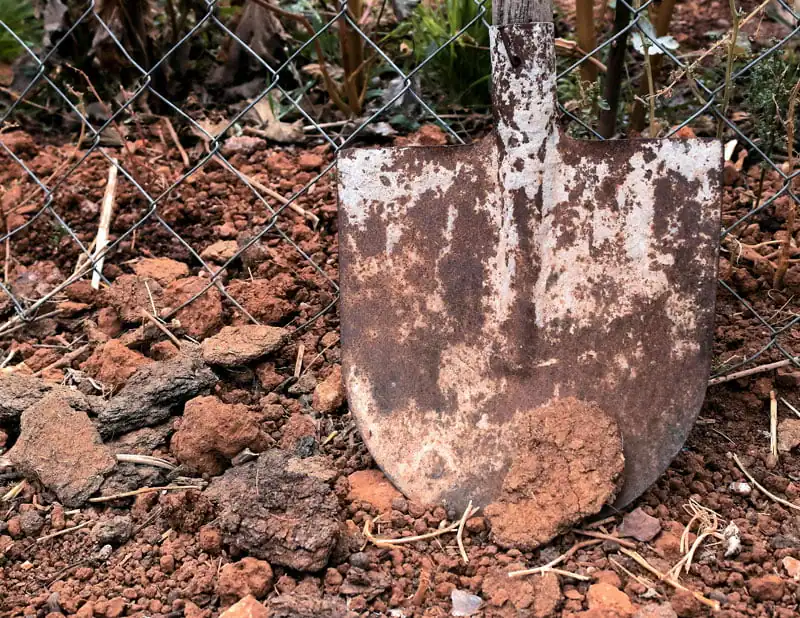Rust is a common issue that plagues many metal objects, from tools to household items. It can be unsightly, weaken the structure of the metal, and can lead to corrosion if left untreated. All of this got me wondering if your good friend, salt, can help remove rust.
In this article, I will dive deeper into the methodology behind using salt to remove rust and explore different methods for using salt to achieve the best results. I’ll cover the types of salt that work best for removing rust, the right ratio of salt to other ingredients, what types of metals you should and should not use salt on, and tips for preventing rust from returning.
Whether you are dealing with a small rust spot or a larger area of rust, this article will provide you with all the information you need to effectively remove rust using salt. So, let’s get started and learn how to remove rust with salt!
Does Salt Remove Rust?
Salt can be used to remove rust from metal surfaces. The process is called electrochemical displacement, which occurs when a more electronegative substance, such as salt, comes into contact with a less electronegative substance, such as iron.
When salt and water are applied to a rusty surface, the salt dissolves and creates a solution of sodium and chloride ions. The iron in the rust reacts with the chloride ions, which causes the rust to break down and be removed from the surface. This process can be accelerated by applying a small amount of acid, such as vinegar or lemon juice, to the rust before applying the salt solution.
Note that this method isn’t suitable for each kind of rust or metal. Only surface-level rust may be removed, not deep corrosion. Additionally, salt can corrode certain metals and cause more destruction than the existing rust; therefore, it’s ideal to test this technique on an insignificantly small area before applying it over a much larger region.
Which Metals Are Most Effectively Treated With Salt To Remove Rust?
Using salt to remove rust works best on iron and steel, which are the metals most commonly affected by rust. It is not recommended to use salt on aluminum, other non-ferrous metals, or painted surfaces since salt is highly corrosive and may do more damage than rust.
The rust must be on the surface and not have deeply corroded the metal for salt to work effectively. If the rust has affected the metal deeply, likely, the rust has already caused some damage, and it may be best to remove the rust by sanding or grinding before treating the surface with a rust inhibitor and repainting.
Pro Tip: “Non-ferrous” refers to metals that don’t contain iron. Examples of non-ferrous metals are aluminum, copper, lead, nickel, tin, zinc, gold, silver, and other precious metals.
Discoloration on metals like aluminum and copper are a form of oxidation, but are not rust. This article only addresses rust, not oxidation. If you don’t know what metal your item is made from, do not use this rust removal with salt method.
What Type Of Salt Works Best For Removing Rust From Metal?
Typically, the most commonly used salts for rust removal are table salt (sodium chloride) and Epsom salt (magnesium sulfate).
- Table Salt – Common table salt can be used to remove rust from iron and steel surfaces. When mixed with water to create a paste, it can be applied to the rust and allowed to sit for a few minutes before scrubbing and rinsing the surface. The salt reacts with the rust to break it down, allowing it to be easily removed from the metal surface.
- Epsom Salt – For an accelerated rust-removal process, mix a paste of Epsom salt and water. The magnesium in the salt will react with the rust to break it down quickly and make removal easier. Adding a bit of lemon juice or white vinegar to the mixture can expedite this method even more.
While both table salt and Epsom salt can effectively eradicate rust, their high corrosive properties can cause more harm than assistance if used on certain metals such as aluminum or other non-ferrous types.
What Can Be Added To Salt To Make It A More Effective Rust Remover?
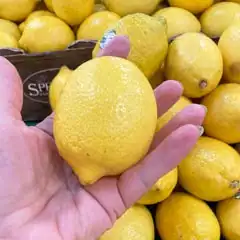
Mixing salt with mild acids like lemon juice or vinegar can make it more powerful at removing rust.
The acid in Lemon Juice or household White Vinegar reacts with the rust, breaking it down and making it easier to remove. This method is known as electrolysis, where the acid acts as an electrolyte and rust as the anode in the electrolytic cell, thus facilitating the transfer of electrons and the rust removal.
Make sure you consider the type of metal before using any mixture, and always test on a small area first!
How Long Does It Take For Salt To Remove Rust?
When using table salt or Epsom salt mixed with water or lemon juice or white vinegar to create a paste, it can take anywhere from a few minutes to several hours for the salt to effectively remove rust.
The rust is dissolved by the salt and the acid in the lemon juice or white vinegar, and the surface should be scrubbed with a brush before rinsing.
When using this method can take several hours to a day or more to remove rust from a surface that has more rust. It may take multiple applications of salt to fully remove rust from a surface. Remember, after the rust is removed, the surface should be cleaned and sealed if possible to prevent rust from forming again.
Salt and Rust Removal on My Cast Iron Skillet
I have a great cast iron skillet that I’ve been using for years. The inside of the skillet is very well seasoned and has no rust at all. It was featured in the article about cleaning with salt: Clean Like A Pro: 12 Hacks To Use Salt For Cleaning. The outside of that pan, however, is very rusty. I thought I would do the rust removal steps described above on a patch of my skillet so you could see how the process works.
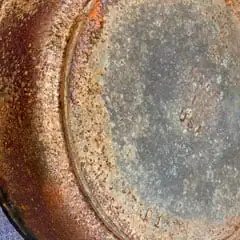
This is a closeup of the bottom of my cast iron skillet.
I made a paste with table salt and white vinegar. I used about 4 times as much salt as I did white vinegar (by volume) to get a pasty consistency that would stick on the pan.
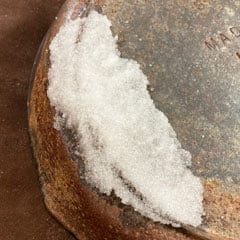
I then took pictures as I could see the reaction taking place. I put together this time lapse series for you:
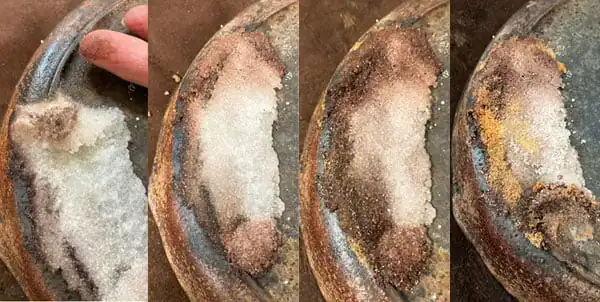
Within about a half hour, I could already see progress – I rubbed at the still wet salt and you can see some rust on my finger. I patted the salt back in place.
The next three pictures were taken at 2 hours, 6 hours and 24 hours. At this point the salt was completely dry. Notice how some of the areas next to the salt patch, but not covered by salt had some of the rust removed. At this point I put the skillet in the sink and rinsed the salt off – I had to scrub a bit with a sponge to get the salt to release from the pan.
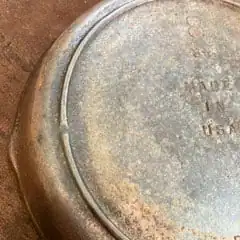
Here is the area on the skillet after the process above. While not all of the rust is gone, a significant improvement has been made!
Featured Photo by İlhan Erce Feyizoğlu

